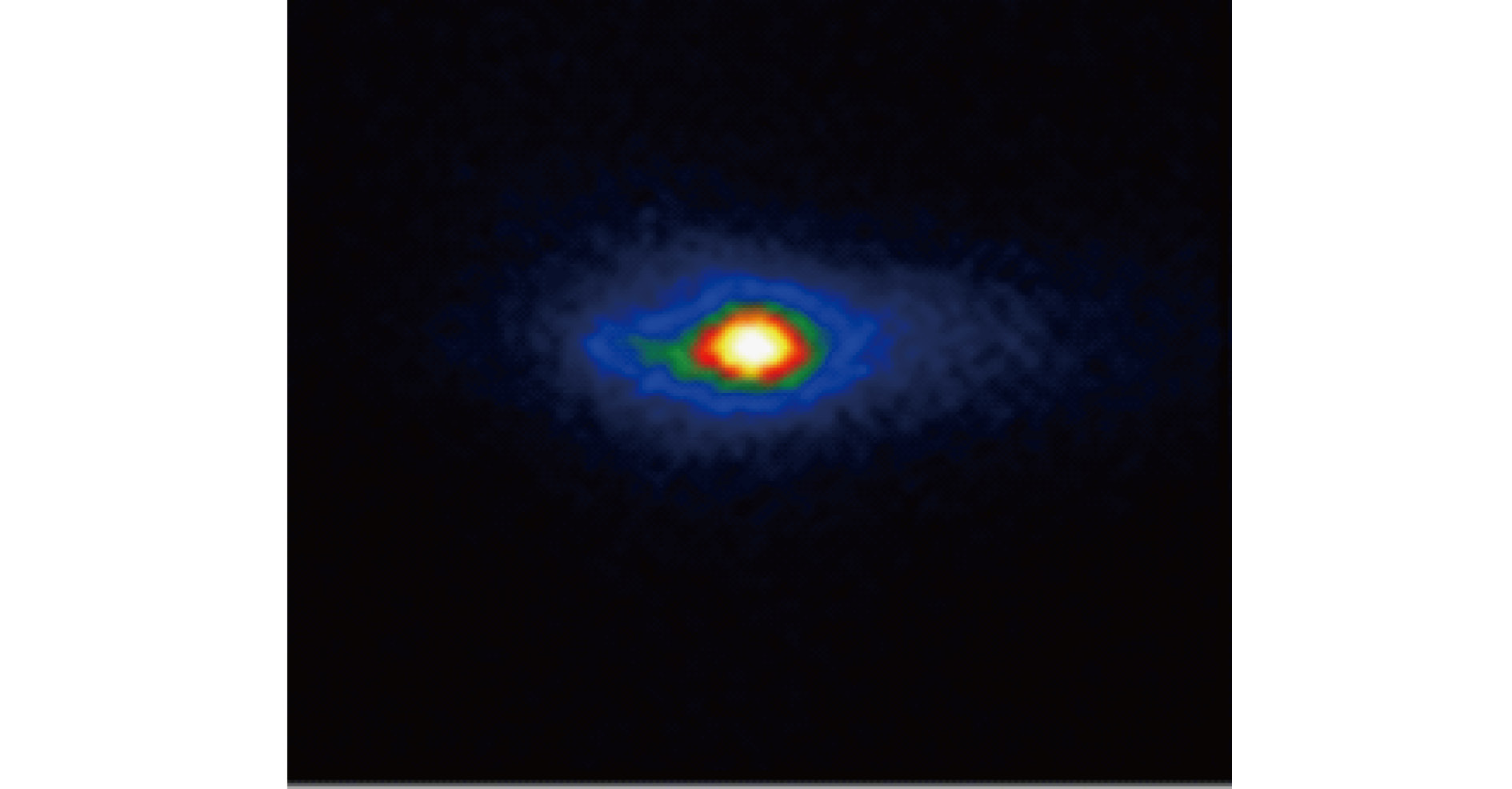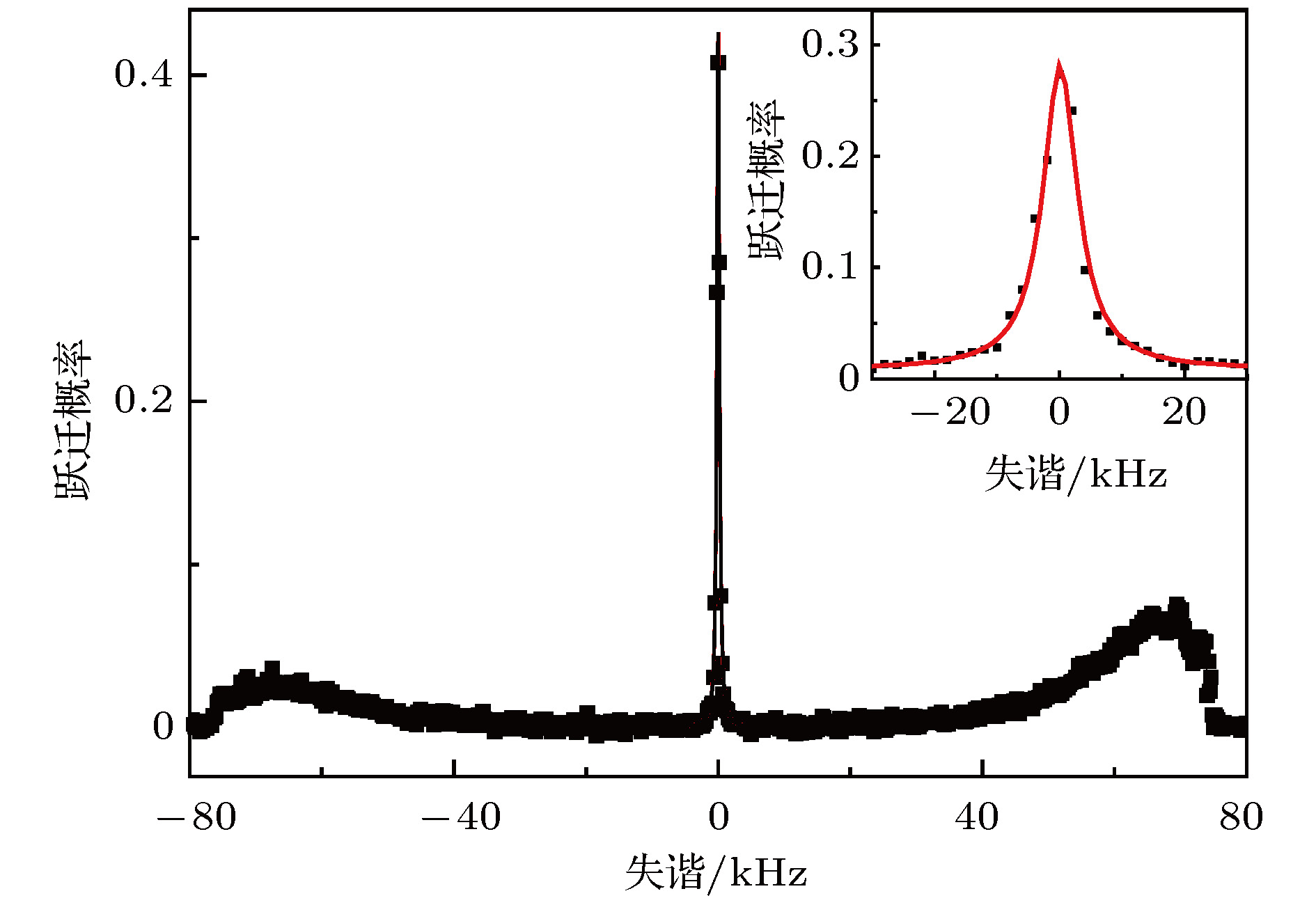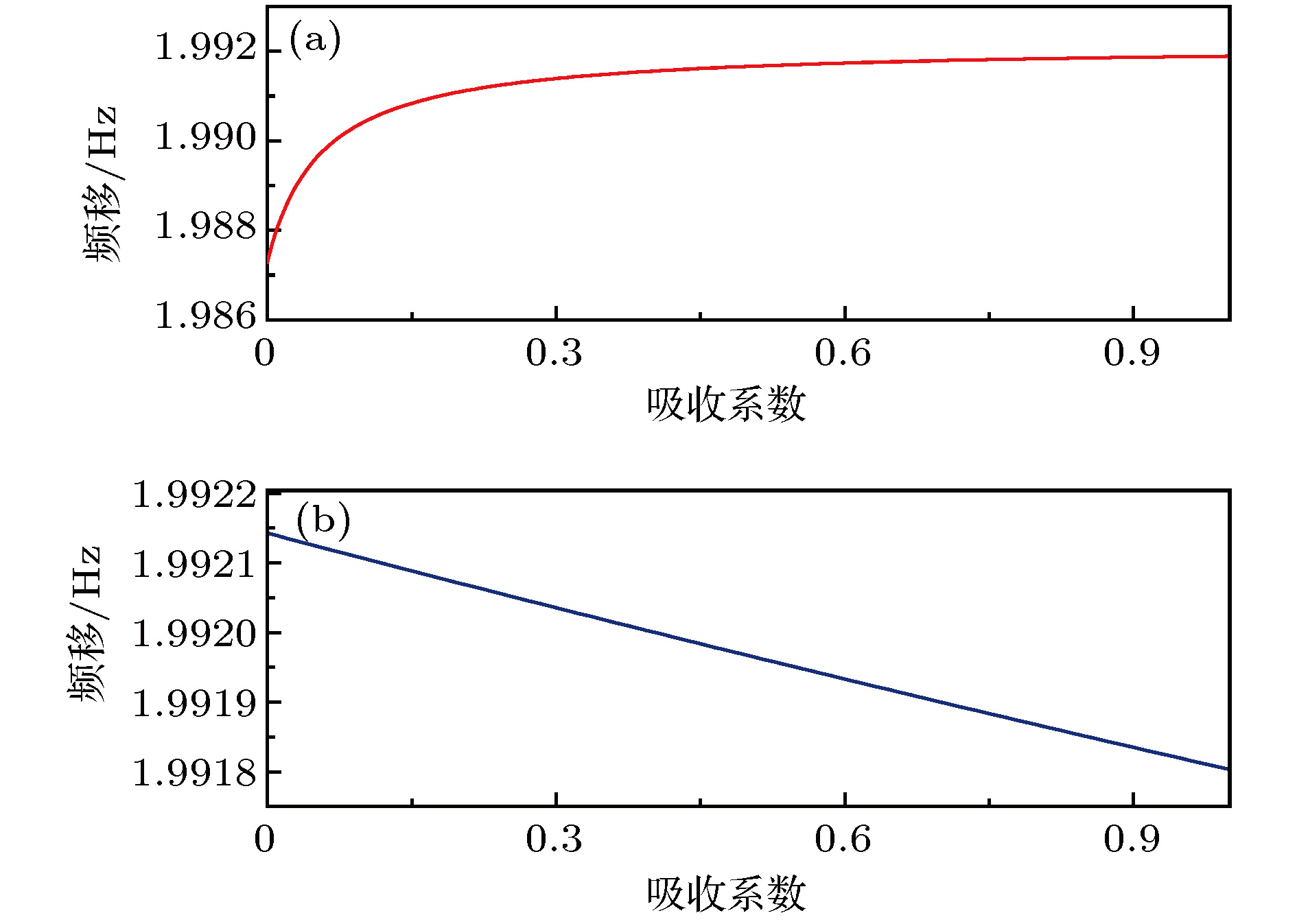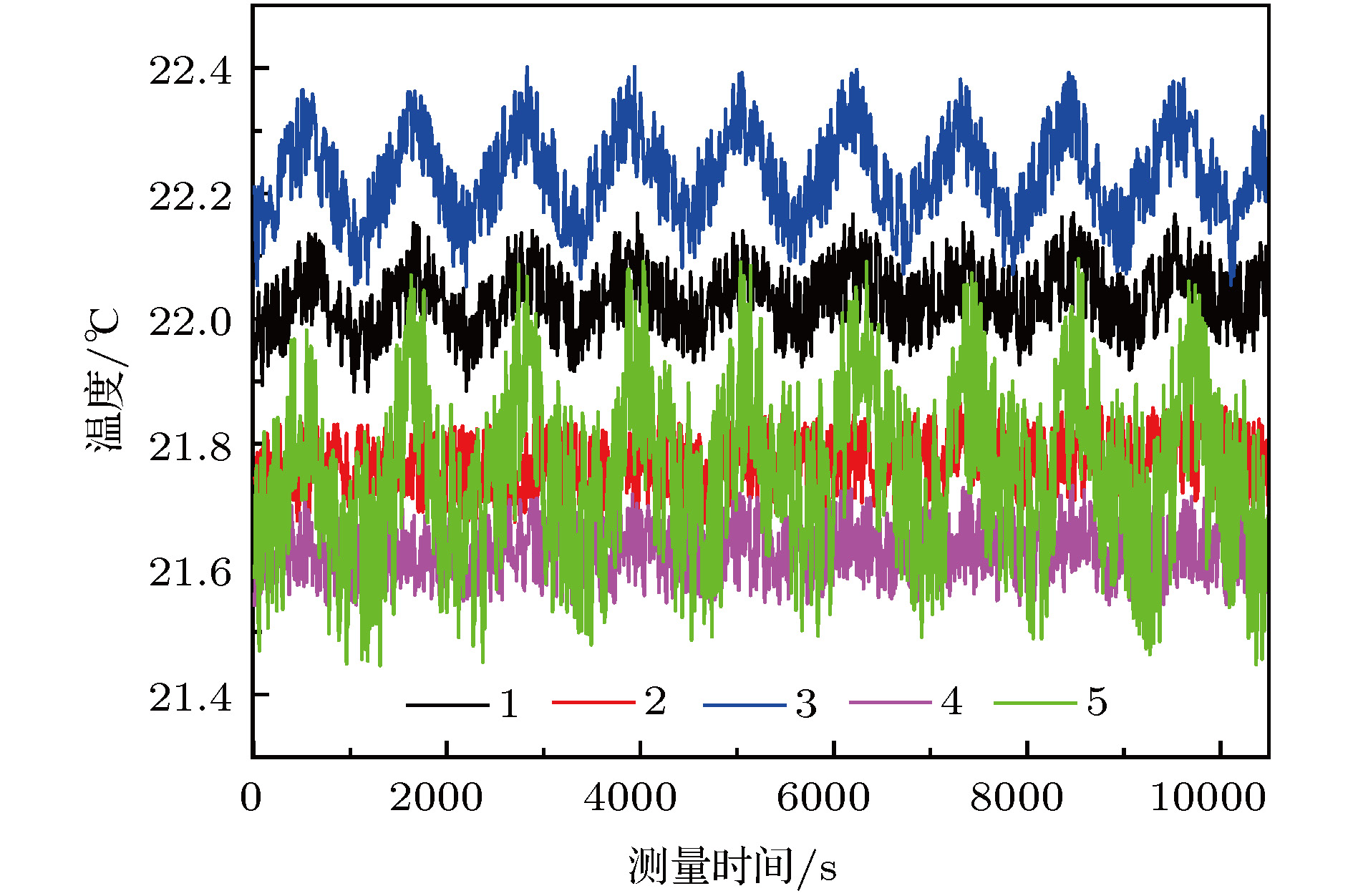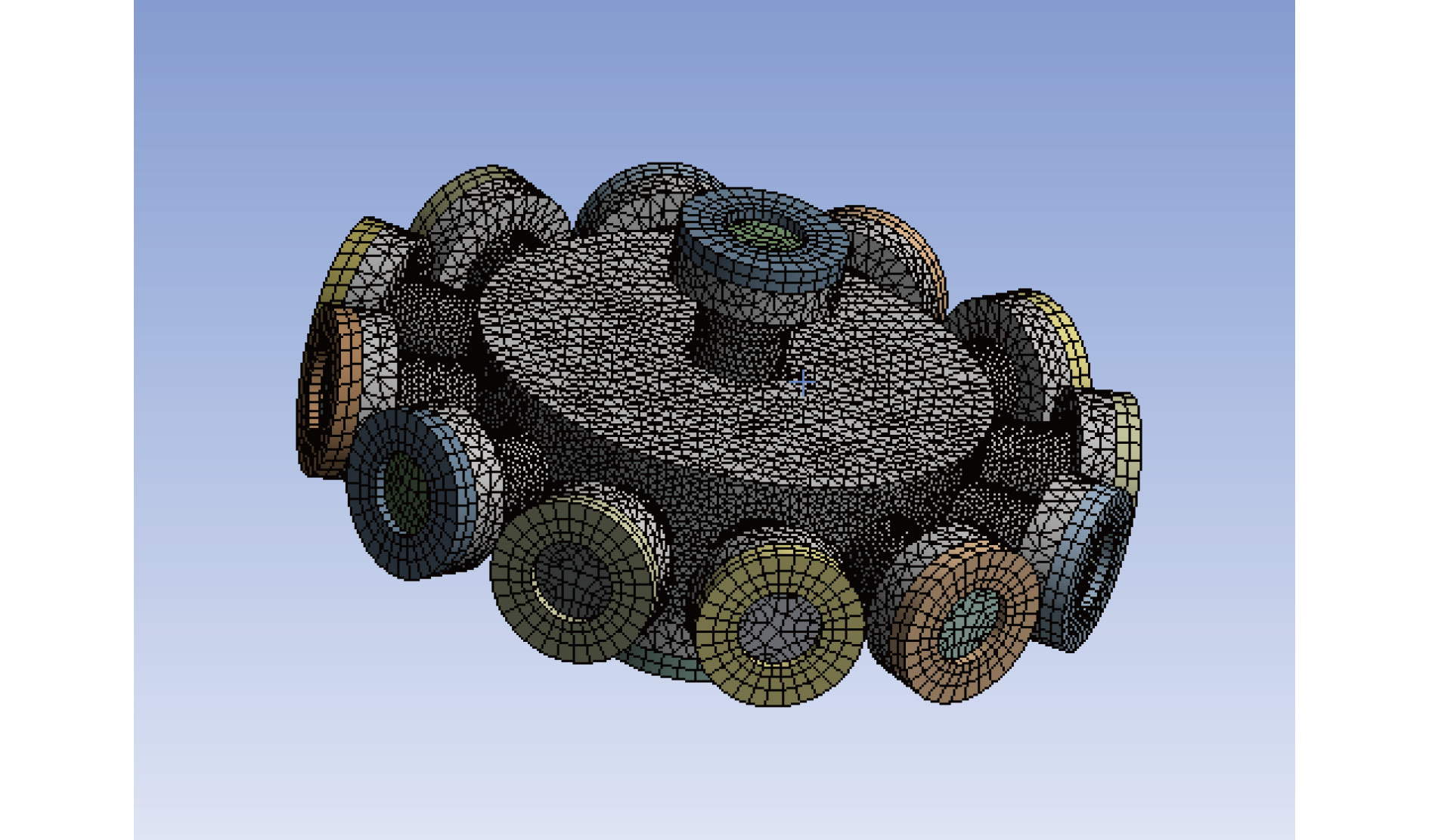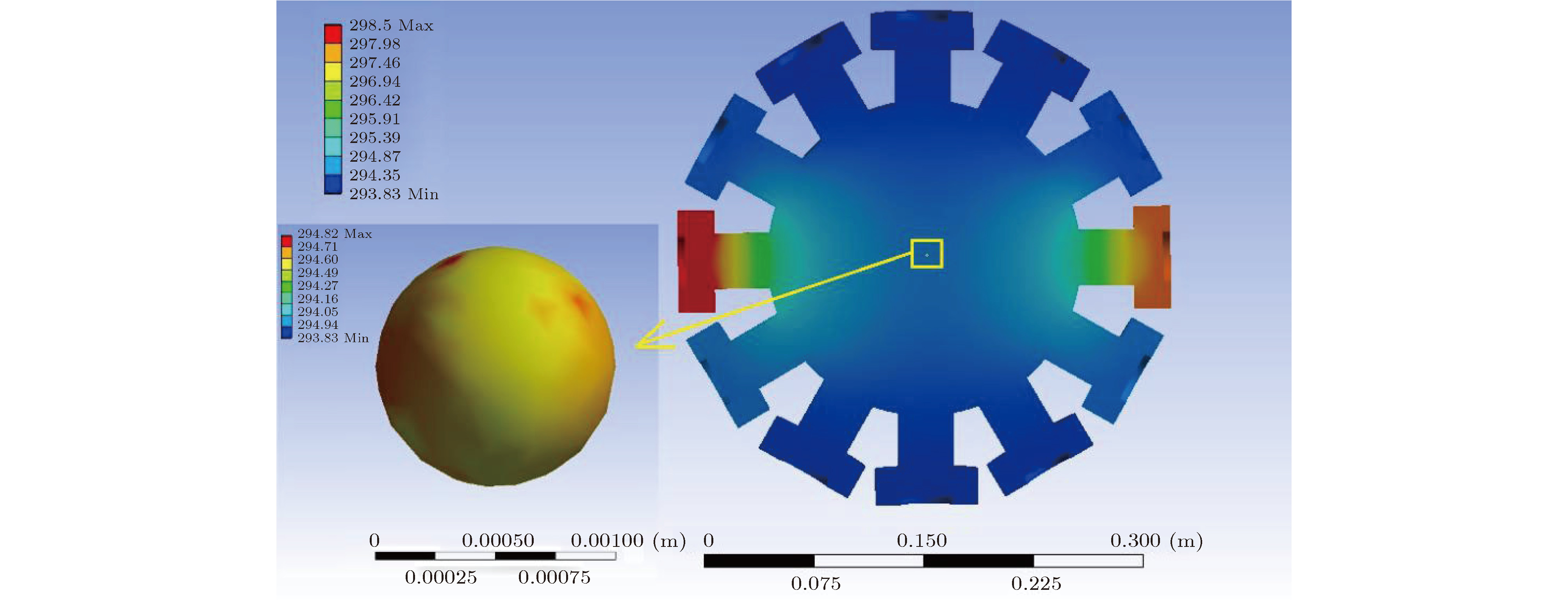-
在中性原子光晶格钟的系统不确定度评估中, 通常黑体辐射引起的频移是最大的一项. 黑体辐射频移主要受周围环境温度的影响. 针对国家授时中心的锶原子光晶格钟实验系统, 通过理论分析、腔体表面温度的测量和软件模拟相结合的方法, 评估了锶原子光晶格钟黑体辐射频移的修正量和不确定度. 其中主要分析了锶原子炉、蓝宝石加热窗口、透过窗口片进入到真空腔体内的室温以及Zeeman减速装置对原子团处的热辐射引起的黑体辐射频移. 在真空腔体外表面设置了5个测温点, 利用校准过的铂电阻温度传感器监测真空腔体外表面的温度变化, 用SolidWorks绘图软件建立腔体模型, 通过有限元分析软件模拟出在真空腔体温度变化0.72 K时, 原子团所处位置温度的波动为0.34 K. 最终得到黑体辐射频移总的修正量为–2.13(1) Hz, 不确定度为2.4 × 10–17.The frequency shift caused by blackbody radiation is one of the dominant corrections to the evaluation of the optical lattice clock. The frequency shift of blackbody radiation is closely related to the dynamic and static correction factor, ambient temperature and atomic polarizability. The blackbody radiation shift is mainly affected by ambient temperature. During the normal operation of the strontium atom optical lattice clock, the experimental environment and other heat sources around the vacuum cavity have complicated the environment around the vacuum cavity, resulting in the fact that the external surface temperature of the vacuum cavity does not truly reflect the temperature change of the vacuum cavity. For the strontium atomic optical clock experimental apparatus of the National Time Service Center, the uncertainty and correctionof the blackbody radiation frequency shift are evaluated by the theoretical analysis, measurement of the temperature of the vacuum cavity outer surface, and software simulation. Among them, the frequency shift of black body radiation caused by strontium atom furnace, sapphire heating window, room temperature radiation entering into the vacuum cavity through the window plate, and the thermal radiation at the atomic group caused by Zeeman reducer are analyzed. Five temperature measuring points are set on the external surface of the vacuum chamber, and the temperature changes on the external surface of the vacuum chamber are monitored in real time by using the calibrated platinum resistance temperature sensor while the system is running normally. We obtain the average temperature of the five temperature measuring points. The model of vacuum cavity is established by using the SolidWorks. The method of finite element analysis is used to simulate the variation of the temperature around atom samples. We also obtain the temperature distribution around the atomic groups in the vacuum cavity. The result shows that the temperature around atoms varies with the temperature of the vacuum cavity. When the temperature of the ambient temperature changes 0.72 K, the fluctuation of the temperature around the atoms is 0.34 K. Finally, the total correction of blackbody radiation of the system is evaluated to be –2.13(1) Hz, and the correction uncertainty is about 2.4 × 10–17.
-
Keywords:
- strontium optical lattice clock /
- thermal radiation /
- blackbody radiation shift /
- finite element analysis
[1] Derevianko A, Katori H 2011 Rev. Mod. Phys. 83 331
 Google Scholar
Google Scholar
[2] Bloom B J, Nicholson T L, Williams J R, Campbell S L, Bishof M, Zhang X, Zhang W, Bromley S L, Ye J 2014 Nature 506 71
 Google Scholar
Google Scholar
[3] Hinkley N, Sherman J A, Phillips N B, Schioppo M, Lemke N D, Beloy K, Pizzocaro M, Oates C W, Ludlow A D 2013 Science 341 1215
 Google Scholar
Google Scholar
[4] Nicholson T L, Campbell S L, Hutson R B, Marti G E, Bloom B J, McNally R L, Zhang W, Barrett M D, Safronova M S, Strouse G F, Tew W L, Ye J 2015 Nat. Commun. 6 6896
 Google Scholar
Google Scholar
[5] Ushijima I, Takamoto M, Das M, Ohkubo T, Katori H 2015 Nat. Photon. 9 185
 Google Scholar
Google Scholar
[6] Campbell S L, Hutson R B, Marti G E, Goban A, Oppong N D, Mcally R L, Sonderhouse L, Robinson J M, Zhang W, Bloom B J, Ye J 2017 Science 358 90
 Google Scholar
Google Scholar
[7] McGrew W F, Zhang X, Fasano1 R J, Schäffer S A , Beloy K, Nicolodi D, Brown R C, Hinkley N, Milani G, Schioppo M, Yoon T H, Ludlow A D 2018 Nature 564 87
 Google Scholar
Google Scholar
[8] Derevianko A, Pospelov M 2014 Nat. Phys. 10 933
 Google Scholar
Google Scholar
[9] Kolkowitz S, Pikovski I, Langellier N, Lukin M D, Walsworth R L, Ye J 2016 Phys. Rev. D 94 124043
 Google Scholar
Google Scholar
[10] Blatt S, Ludlow A D, Campbell G K, Thomsen J W, Zelevinsky T, Boyd M M, Ye J, Baillard X, Fouché M, Le Targat R, Brusch A, Lemonde P, Takamoto M, Hong F L, Katori H, Flambaum V V 2008 Phys. Rev. Lett. 100 140801
 Google Scholar
Google Scholar
[11] Godun R M, Nisbet-Jones P B R, Jones J M, King S A, Johnson L A M, Margolis H S, Szymaniec K, Lea S N, Bongs K, Gill P 2014 Phys. Rev. Lett. 113 210801
 Google Scholar
Google Scholar
[12] Huntemann N, Lipphardt B, Tamm C, Gerginov V, Weyers S, Peik E 2014 Phys. Rev. Lett. 113 210802
 Google Scholar
Google Scholar
[13] Ludlow A D, Boyd M M, Ye J, Peik E, Schmidt P O 2015 Rev. Mod. Phys. 87 637
 Google Scholar
Google Scholar
[14] Yudin V I, Taichenachev A V, Okhapkin M V, Bagayev S N, Tamm C, Peik E, Huntemann N, Mehlstäubler T E, Riehle F 2011 Phys. Rev. Lett. 107 030801
 Google Scholar
Google Scholar
[15] Beloy K, Hinkley N, Phillips N B, Sherman J A, Schioppo M, Lehman J, FeldmanA, Hanssen L M, Oates C W, Ludlow A D 2014 Phys. Rev. Lett. 113 260801
 Google Scholar
Google Scholar
[16] Wang Y B, Yin M J, Ren J, Xu Q F, Lu B Q, Han J X, Guo Y, Chang H 2018 Chin. Phys. B 27 023701
 Google Scholar
Google Scholar
[17] Wang Y B, Lu X T, Lu B Q, Kong D H, Chang H 2018 Appl. Sci. 8 2194
 Google Scholar
Google Scholar
[18] Itano W M, Lewis L L, Wineland D J 1982 Phys. Rev. A 25 1233
 Google Scholar
Google Scholar
[19] Hollberg L, Hall J L 1984 Phys. Rev. Lett. 53 230
 Google Scholar
Google Scholar
[20] Porsev S G, Derevianko A 2006 Phys. Rev. A 74 020502
 Google Scholar
Google Scholar
[21] Safronova M S, Porsev S G, Safronova U I, Kozlov M G, Clark C W 2013 Phys. Rev. A 87 012509
 Google Scholar
Google Scholar
[22] Middelmann T, Lisdat C, Falke S, Winfred J S R V, Riehle F, Sterr U 2011 IEEE Trans. Instrum. Meas. 60 2550
 Google Scholar
Google Scholar
[23] Middelmann T, Falke S, Lisdat C, Sterr U 2012 Phys. Rev. Lett. 109 263004
 Google Scholar
Google Scholar
[24] Falke S, Lemke N, Grebing C, Lipphardt B, Weyers S, Gerginov V, Huntemann N, Hagemann C, Al-Masoudi A, Häfner S, Vogt S, Sterr U, Lisdat C 2014 New J. Phys. 16 073023
 Google Scholar
Google Scholar
-
表 1 不同热源对应的频移修正量
Table 1. Frequency shift correction for different heat sources.
热源 频移修正量 室温 –0.0172(2) Hz 原子炉 –0.0031(4) Hz 蓝宝石加热窗口 –0.0013(1) Hz Zeeman减速窗口 –0.00027(4) Hz -
[1] Derevianko A, Katori H 2011 Rev. Mod. Phys. 83 331
 Google Scholar
Google Scholar
[2] Bloom B J, Nicholson T L, Williams J R, Campbell S L, Bishof M, Zhang X, Zhang W, Bromley S L, Ye J 2014 Nature 506 71
 Google Scholar
Google Scholar
[3] Hinkley N, Sherman J A, Phillips N B, Schioppo M, Lemke N D, Beloy K, Pizzocaro M, Oates C W, Ludlow A D 2013 Science 341 1215
 Google Scholar
Google Scholar
[4] Nicholson T L, Campbell S L, Hutson R B, Marti G E, Bloom B J, McNally R L, Zhang W, Barrett M D, Safronova M S, Strouse G F, Tew W L, Ye J 2015 Nat. Commun. 6 6896
 Google Scholar
Google Scholar
[5] Ushijima I, Takamoto M, Das M, Ohkubo T, Katori H 2015 Nat. Photon. 9 185
 Google Scholar
Google Scholar
[6] Campbell S L, Hutson R B, Marti G E, Goban A, Oppong N D, Mcally R L, Sonderhouse L, Robinson J M, Zhang W, Bloom B J, Ye J 2017 Science 358 90
 Google Scholar
Google Scholar
[7] McGrew W F, Zhang X, Fasano1 R J, Schäffer S A , Beloy K, Nicolodi D, Brown R C, Hinkley N, Milani G, Schioppo M, Yoon T H, Ludlow A D 2018 Nature 564 87
 Google Scholar
Google Scholar
[8] Derevianko A, Pospelov M 2014 Nat. Phys. 10 933
 Google Scholar
Google Scholar
[9] Kolkowitz S, Pikovski I, Langellier N, Lukin M D, Walsworth R L, Ye J 2016 Phys. Rev. D 94 124043
 Google Scholar
Google Scholar
[10] Blatt S, Ludlow A D, Campbell G K, Thomsen J W, Zelevinsky T, Boyd M M, Ye J, Baillard X, Fouché M, Le Targat R, Brusch A, Lemonde P, Takamoto M, Hong F L, Katori H, Flambaum V V 2008 Phys. Rev. Lett. 100 140801
 Google Scholar
Google Scholar
[11] Godun R M, Nisbet-Jones P B R, Jones J M, King S A, Johnson L A M, Margolis H S, Szymaniec K, Lea S N, Bongs K, Gill P 2014 Phys. Rev. Lett. 113 210801
 Google Scholar
Google Scholar
[12] Huntemann N, Lipphardt B, Tamm C, Gerginov V, Weyers S, Peik E 2014 Phys. Rev. Lett. 113 210802
 Google Scholar
Google Scholar
[13] Ludlow A D, Boyd M M, Ye J, Peik E, Schmidt P O 2015 Rev. Mod. Phys. 87 637
 Google Scholar
Google Scholar
[14] Yudin V I, Taichenachev A V, Okhapkin M V, Bagayev S N, Tamm C, Peik E, Huntemann N, Mehlstäubler T E, Riehle F 2011 Phys. Rev. Lett. 107 030801
 Google Scholar
Google Scholar
[15] Beloy K, Hinkley N, Phillips N B, Sherman J A, Schioppo M, Lehman J, FeldmanA, Hanssen L M, Oates C W, Ludlow A D 2014 Phys. Rev. Lett. 113 260801
 Google Scholar
Google Scholar
[16] Wang Y B, Yin M J, Ren J, Xu Q F, Lu B Q, Han J X, Guo Y, Chang H 2018 Chin. Phys. B 27 023701
 Google Scholar
Google Scholar
[17] Wang Y B, Lu X T, Lu B Q, Kong D H, Chang H 2018 Appl. Sci. 8 2194
 Google Scholar
Google Scholar
[18] Itano W M, Lewis L L, Wineland D J 1982 Phys. Rev. A 25 1233
 Google Scholar
Google Scholar
[19] Hollberg L, Hall J L 1984 Phys. Rev. Lett. 53 230
 Google Scholar
Google Scholar
[20] Porsev S G, Derevianko A 2006 Phys. Rev. A 74 020502
 Google Scholar
Google Scholar
[21] Safronova M S, Porsev S G, Safronova U I, Kozlov M G, Clark C W 2013 Phys. Rev. A 87 012509
 Google Scholar
Google Scholar
[22] Middelmann T, Lisdat C, Falke S, Winfred J S R V, Riehle F, Sterr U 2011 IEEE Trans. Instrum. Meas. 60 2550
 Google Scholar
Google Scholar
[23] Middelmann T, Falke S, Lisdat C, Sterr U 2012 Phys. Rev. Lett. 109 263004
 Google Scholar
Google Scholar
[24] Falke S, Lemke N, Grebing C, Lipphardt B, Weyers S, Gerginov V, Huntemann N, Hagemann C, Al-Masoudi A, Häfner S, Vogt S, Sterr U, Lisdat C 2014 New J. Phys. 16 073023
 Google Scholar
Google Scholar
计量
- 文章访问数: 13793
- PDF下载量: 139
- 被引次数: 0














 下载:
下载:
